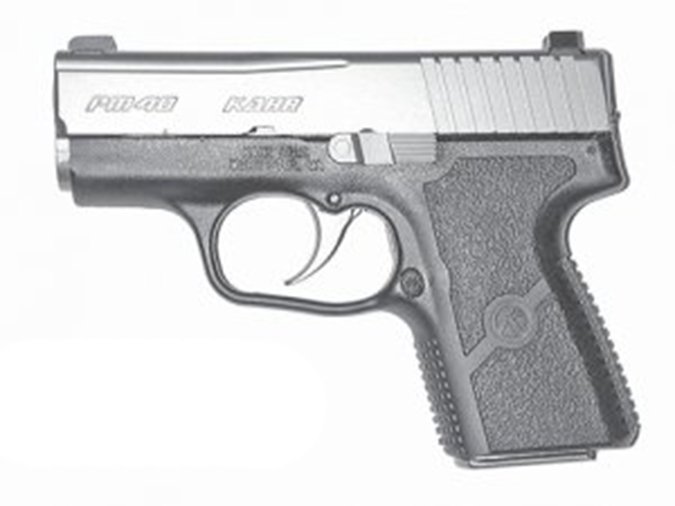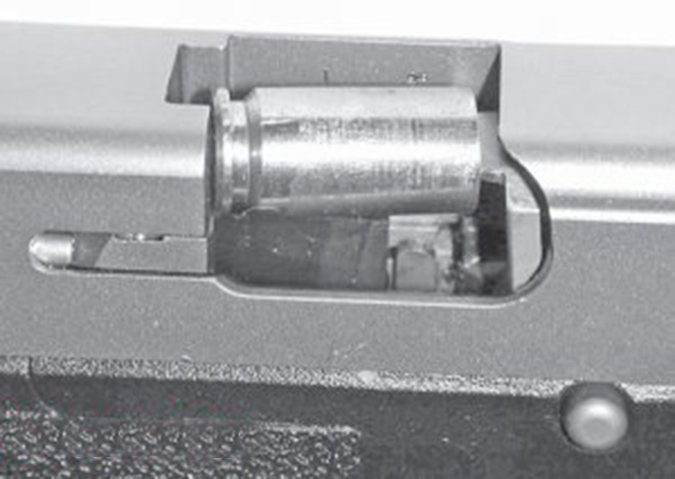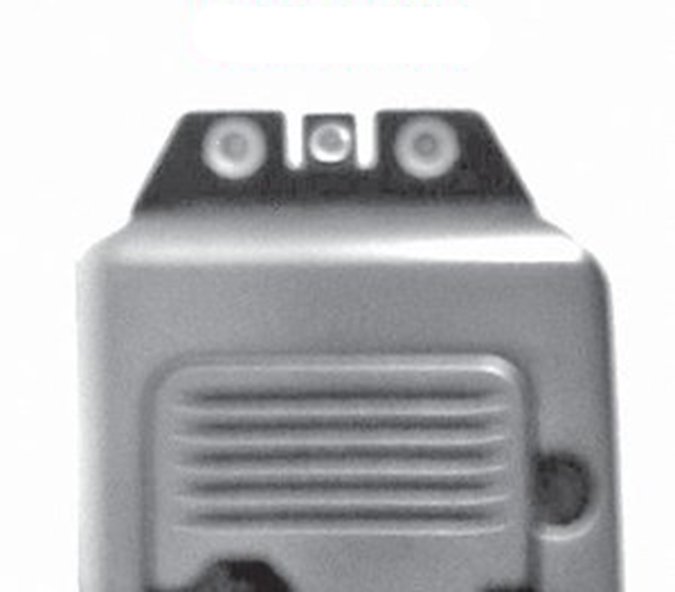A short while back Gun Tests magazine tested some pretty small 9mm pistols, by Kahr and by Rohrbaugh. They particularly liked the Kahr PM9’s handling qualities, and the fact that it worked well as a back-up pistol. They noted Kahr produces a similar pistol in .40 S&W caliber, called the PM40. They decided it was appropriate to try one, because anyone who liked the PM9 would probably welcome more power in a package nearly as small.

If you take the small/powerful concept to the limit, you’d be looking at a pocket pistol chambered for the .500 Linebaugh. But they said they would not dare shoot such a gun. The problem is, of course, recoil. If a powerful handgun has small dimensions, one can’t get his whole hand onto the grip, so control can become a problem, depending on the load selected. Self-defense handguns are normally loaded with strong-recoiling ammo. If the entire controlling hand can be wrapped around the grip, all fingers on the gun, control becomes more manageable. Unfortunately, they said, they could only get all fingers onto the grip of the Kahr when it was fitted with its extended magazine. Even then, with stout loads the gun tended to jump out of their supporting hand. In a nutshell, they felt they were at the edge of control with the Kahr, and they thought small 40s in general will be best used by more-experienced shooters, not novices. Here’s a closer look.
The test Kahr came with green tritium inserts in its excellent sights, but if you can do without such sights, the gun lists for only $707. That’s over a C-note for night-visible sights, but many shooters feel they’re essential on a carry gun. The slide of the PM40 was “white” matte stainless, and the frame was black polymer with molded-in square checkering on the front and rear grip straps. The gun felt top-heavy. The “white” appearance of the PM40’s slide probably contributed to the larger look of the .40-caliber Kahr over the all-black 9mm version tested earlier. The PM40’s trigger was also white finished. They measured the slide dimensions on each gun and found the .40-cal’s slide to be 0.052 inch higher and 0.040 inch thicker. Kahr added steel to the slide to make the design viable with the higher-recoiling .40 S&W cartridge. They were sure the spring rates were altered also, and they said they knew the magazines were different. The five-shot .40-cal. mag won’t go into the 9mm pistol. However, the magazine for the 9mm worked well (with limited testing) in the .40 pistol. It even held the slide open after the last shot.

The fit and finish were excellent on the PM40. The metal polish was flawless, and the slide serrations were sharp enough to make controlling the slide easy during loading and unloading. The sights were dovetailed in place, but not pinned. They noted the barrel, which was matte finished, quickly showed marks from cycling. The PM9 did this as well, but after the wear shows up, it seems to stop and just looks slightly worn in. They didn’t find this all that objectionable. The PM40 was well deburred all over, presenting smooth surfaces to both hands and to a holster. How well it would work from the pocket would depend on the pocket and on the size of the shooter’s hand.
There was no shake to the slide in its fit on the frame. They expected the fit might open up slightly, as it has on the PM9, but by no means has it got excessive on the latter. The trigger pull of the PM40 was consistent, and broke with some element of surprise, but though they could easily double-tap the PM9, they found that action to be distinctly slower on the PM40 because of greater recoil. The sight picture was, once again, excellent. They liked the tritium inserts and believe they complete the package of this small handgun. The grip checkering helped them control the little gun.
Takedown was a snap. Unload the gun, then align two marks on the slide and frame, and bump out the barrel-retention pin from right to left. Then press on the trigger, hold it, and ease the slide off the gun. The captive slide springs can then be removed, and the barrel can be lifted out for cleaning. The rifling was segmental, and worked well. Reassembly was easy, though they noted that they had to take care to get the rear part of the tiny pin-retention spring in the correct place, on top of the small inner protrusion on the barrel pin.

The shorter of the two magazines provided with the gun in its fitted black case held five rounds, plus one in the chamber. The longer magazine upped capacity to six, plus one. They did most of their testing with the smaller magazine, and made sure to test the gun with a full complement of rounds. On the range, they had one failure to feed from a full magazine when the gun was entirely new, and one failure to eject a round. However, after a few shots (Kahr recommends 200 to break the gun in), everything worked perfectly, but for one shot along the way. They had a misfire, but there was no mark on the primer. The offending round came out with difficulty. They had fired many rounds at that point, and suspected there was dirt on the round or in the chamber, and it caused the slide to fail to go completely closed. That round fired perfectly once they cleared it and put it back into the gun. They don’t believe this was a fault of the gun; it was a failure on their part to keep things sufficiently clean in the test environment.
Trigger pull was right at 7 pounds. The accuracy was adequate, but not outstanding, with the test ammunition. Most groups were just over 3 inches at 15 yards. They tried three brands of ammo on target and over the chronograph, Cor-Bon’s 135-grain JHP, Winchester’s Personal Protection 155-grain Silvertip HP, and PMC’s 180-grain FJM/FP with flat tip. The Winchester ammo was the heaviest-recoiling load of the trio, and would be the first choice for a defensive round in the .40 S&W. They also tried two other types of ammo for function, Remington’s 155-grain JHP and Federal’s 135-grain Hydra-Shok JHP, and all worked perfectly with the limited shooting. They noted that with the Remington ammo, which chronographed slightly faster than the 155-grain Winchester test ammo, they got a huge ball of flame and a thunderous concussion with each shot. The flame ball was easily 2 feet in diameter, clearly visible on a bright day. Remington might want to change powder in that load, because such a flash would both blind the shooter at night and give away his position to anyone within a few miles. Undoubtedly that ammo would work better in a longer barrel.
Gun Tests Recommends:
We would be happy to use the Kahr as a back-up to a larger piece, much as we would its smaller cousin, the PM9. As noted, we don’t think this gun would be suitable for inexperienced shooters because of its hefty recoil. However, we noted the kick of the Kahr was less objectionable with some hot loads than the same load in the heavy-slide Springfield XD or the Rami. We don’t know why this is, but the two heavier guns, particularly the XD, gave us a stouter whack on the hands with some loads than the PM40. We could not fault the PM40, though we found it to be a little slower for the second shot than the PM9. It was easy to shoot one-handed with the stoutest loads available. The PM40 was well made, reliable, and had enough accuracy for just about any purpose. We believe it fulfills its design parameters very well, and clearly was the best of this trio for back-up work. Street prices can save you a bunch, and that might make the Kahr perfect for you.”


























